Contents
Guide
Pagebreaks of the print version
Novel Bodies
TRANSITS:
LITERATURE, THOUGHT & CULTURE 1650 1850
Series Editors
Greg Clingham, Bucknell University
Kathryn Parker, University of WisconsinLa Crosse
Miriam Wallace, New College of Florida
Transits is a series of scholarly monographs and edited volumes publishing beautiful and surprising work. Without ideological bias the series seeks transformative readings of the literary, artistic, cultural, and historical interconnections between Britain, Europe, the Far East, Oceania, and the Americas during the years 1650 and 1850, and as their implications extend down to the present time. In addition to literature, art, and history, such global perspectives might entail considerations of time, space, nature, economics, politics, environment, gender, sex, race, bodies, and material culture, and might necessitate the development of new modes of critical imagination. At the same time, the series welcomes considerations of the local and the national, for original new work on particular writers and readers in particular places in time continues to be foundational to the discipline.
Since 2011, sixty-five Transits titles have been published or are in production.
Recent Titles in the Series
Fire on the Water: Sailors, Slaves, and Insurrection in Early American Literature, 17891886
Lenora Warren
Community and Solitude: New Essays on Johnsons Circle
Anthony W. Lee, ed.
The Global Wordsworth: Romanticism Out of Place
Katherine Bergren
Cultivating Peace: The Virgilian Georgic in English, 16501750
Melissa Schoenberger
Intelligent Souls? Feminist Orientalism in Eighteenth-Century English Literature
Samara Anne Cahill
Jane Austen and Comedy
Erin M. Goss, ed.
The Printed Reader: Gender, Quixotism, and Textual Bodies in Eighteenth-Century Britain
Amelia Dale
For a full list of Transits titles go to https://www.bucknell.edu/script/upress/series.asp?id=33
TRANSITS
Novel Bodies
DISABILITY AND SEXUALITY IN EIGHTEENTH-CENTURY BRITISH LITERATURE
JASON S. FARR

LEWISBURG, PENNSYLVANIA
Library of Congress Cataloging in Publication Number: 2019012863
A British Cataloging-in-Publication record for this book is available from the British Library.
Copyright 2019 by Jason S. Farr
All rights reserved
No part of this book may be reproduced or utilized in any form or by any means, electronic or mechanical, or by any information storage and retrieval system, without written permission from the publisher. Please contact Bucknell University Press, Hildreth-Mirza Hall, Bucknell University, Lewisburg, PA 17837-2005. The only exception to this prohibition is fair use as defined by U.S. copyright law.
 The paper used in this publication meets the requirements of the American National Standard for Information SciencesPermanence of Paper for Printed Library Materials, ANSI Z39.48-1992.
The paper used in this publication meets the requirements of the American National Standard for Information SciencesPermanence of Paper for Printed Library Materials, ANSI Z39.48-1992.
www.bucknell.edu/UniversityPress
Distributed worldwide by Rutgers University Press
Manufactured in the United States of America
For Alan
CONTENTS
Novel Bodies
T HE EIGHTEENTH CENTURY IS OFTEN regarded as a period in which the idea of the individual undergoes significant developments and, relatedly, in which nascent codes of modern embodiment that feel to us at once familiar and foreign proliferate in a variety of cultural forms. In grappling with prevailing norms that would appear to privilege nascent models of heterosexuality and able-bodiedness, these writers imagine impaired bodies as defining and exceeding the bounds of gender and sexual normativity. In this way, they establish queer, disabled embodiment as an ambivalent experience marked by the exquisite pleasure of transgression and the enduring social and physical pain of disability. In doing so, I argue, these works make clear that the British literary history of sexuality is thoroughly reliant on impaired bodies for its discursive contours.
Given its critical emphasis on the interplay between disability and sexuality in British literature of the eighteenth century, Novel Bodies intervenes in the robust wealth of scholarship that engages Michel Foucaults foundational three-volume work The History of Sexuality .
Pioneering titles in disability studies have elucidated the centrality of deformity and disability in the long eighteenth century. Novel Bodies is indebted to these and other trenchant studies of the cultural history of disability, but it brings its own objective to the fore, which is to deepen our understanding of the centrality of physical and sexual variance for early British novels. This book assumes that eighteenth-century British novels are a particularly fertile venue for conceptualizing disabled and queer pasts. My readings of novels reveal that these facets of embodiment have defined and mutually sustained one another as far back as the early modern period, and that the points of convergence between variable bodies and queer desires serve crucial narrative functions.
To attend to representations of embodiment, I focus my analysis on the characters of these narratives, who are often described in decidedly physical ways. Such physicality, as Aileen Douglas has observed, is typical of early British novels, in which characters bodies betray empiricist philosophies that emphasize sensory perception as a conduit to knowledge. Corporeality, according to Douglas, is one of the problems that the early novel mediates. In the case of the novels under scrutiny in this book, authors may have represented variable embodiment for an array of moral or emotional situations, but my focus in the coming pages is to discern how they employ disability and queerness in their fiction to critique and rework the social fabricto imagine novel social orders that rearrange widespread assumptions, principles, and social practices. In this introduction, I investigate the ableism of John Locke to position disability theory as an urgent critical intervention for eighteenth-century literary studies, and I explore the expansive consequence of deformity in the eighteenth century. I follow this with an overview of the interlocking attributes of queerness and disability. I then historicize queer and disabled affiliations through my close reading of Horace Walpoles The Castle of Otranto (1764) before situating this project within existing scholarship in eighteenth-century novel studies. Finally, I give a chapter-by-chapter overview of the book as a whole.
LOCKES ABLEISM, DEFORMITY, AND DISABILITY THEORY
Scholars often discuss the enormous impact of John Lockes ideas about education and individual subjectivity on the novel form, but what is customarily overlooked in these studies is Lockes ableism, which relegates people with impairments of various kinds to non-subjecthood. During the long eighteenth century, in large part because of Locke, evolving conceptions of the individual a feeling, intuiting subject that is capable of experiencing the world in an autonomous manneremerge in the midst of social and political shifts that cast modernity as a clean break from an earlier, dark Medieval period. As Raymond Williams argues, the etymological forebear of individual is individuus , which in the Medieval period referred to a collective unity or spirit that was indivisible (such as the holy trinity). Over time and with suitable guidance, individuals become subjects, capable of rational thought.


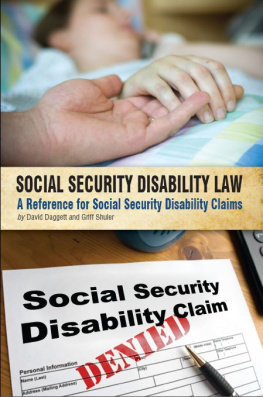
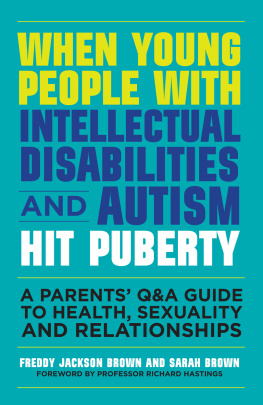
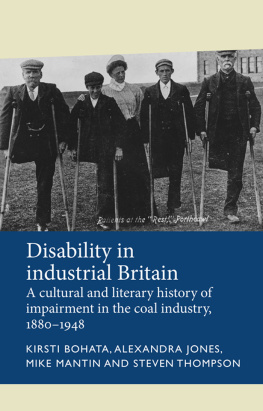
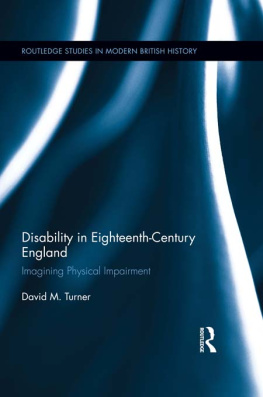
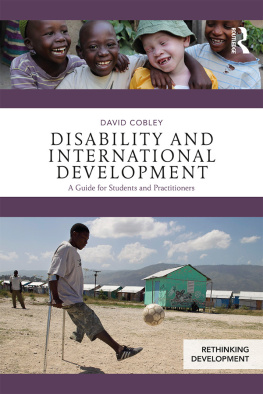
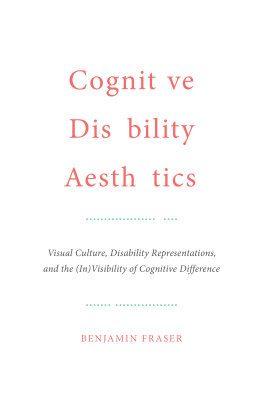
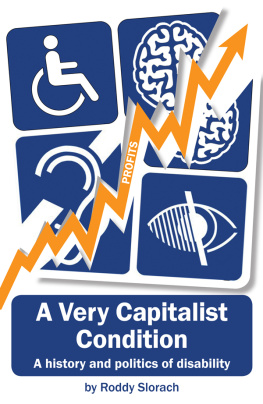
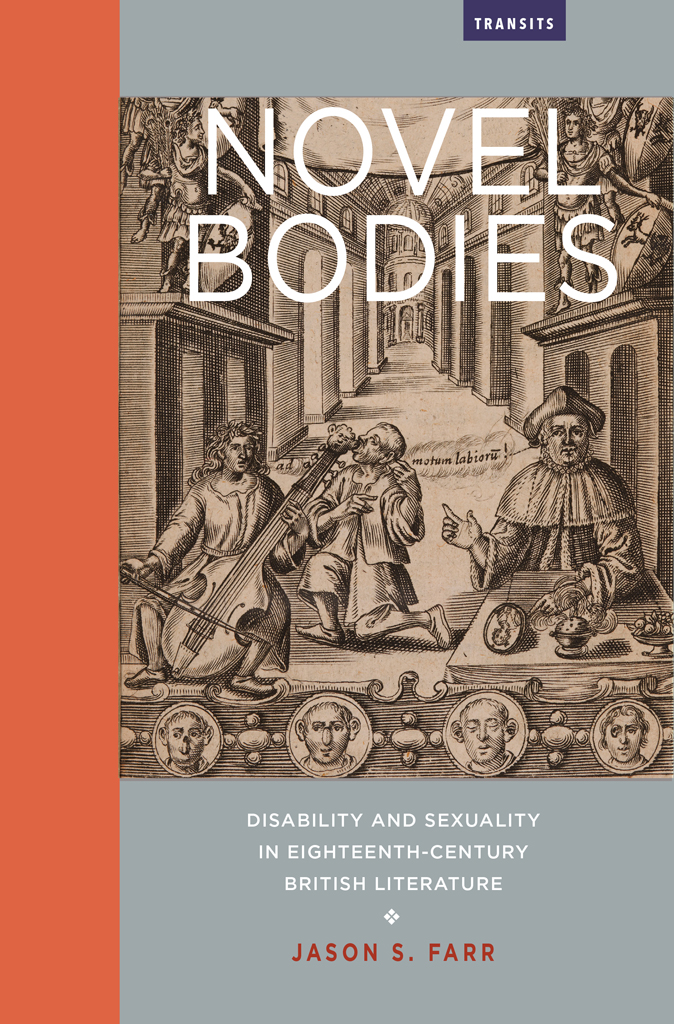

 The paper used in this publication meets the requirements of the American National Standard for Information SciencesPermanence of Paper for Printed Library Materials, ANSI Z39.48-1992.
The paper used in this publication meets the requirements of the American National Standard for Information SciencesPermanence of Paper for Printed Library Materials, ANSI Z39.48-1992.